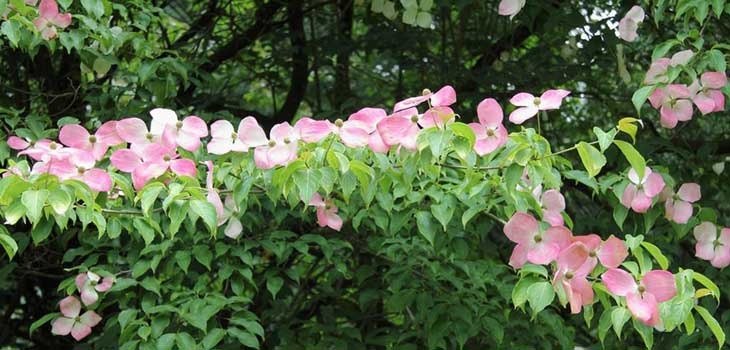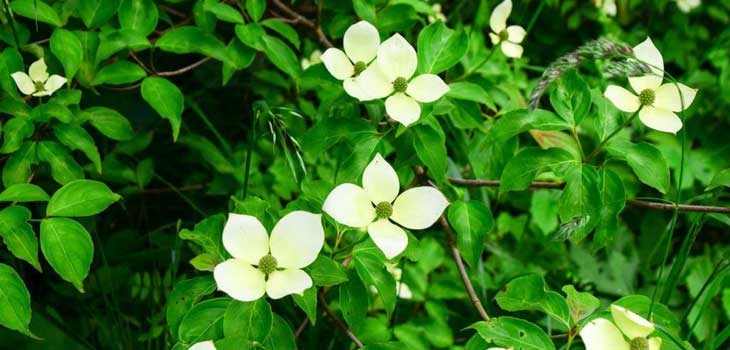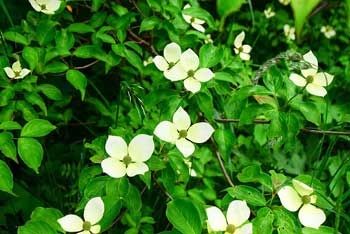Summer highlight: Flowering dogwood
This month we’re featuring the flowering dogwood, a tree that is worth seeking out throughout the year whether it’s in flower or not.
Origin
Native to eastern North America and northern Mexico this species of flowering tree can often be found planted as an ornamental in residential and public areas due to its showy bracts.
Historically, the bark and roots of the flowering dogwood were used to create a remedy for malaria by Native Americans. Different parts of this species had many uses, including extracting red dye from the roots rich in tannins and making wooden tools from the hard, dense wood.

Appearance
As a small deciduous tree, it reaches heights of 10 metres and is often wider than it is tall once matured. Its leaves are simple and opposite, turning a rich red-brown in fall.
The bracts of this plant appear in June as pure white, before slowly turning to deep pink in July.
At Westonbirt
Flowering dogwood ‘Norman Hadden' (Cornus ‘ Norman Hadden') Cultivar 'Norman Hadden' is one of the most famous flowering dogwoods. The flowerheads start to purloin one’s attention thanks to the bracts that appear in June.
In autumn you can admire its golf ball-sized fruits, reminiscent of strawberries, which are edible, but due to its poor flavour and texture, we recommend leaving them for birds.

Will you be searching for this ornamental tree on your next visit? Or do you have a favourite tree you’d like to find out more information about? Let us know by emailing marketing@fowa.org.uk
Seek out the flowering dogwood tree on the arboretum explorer before your visit…
